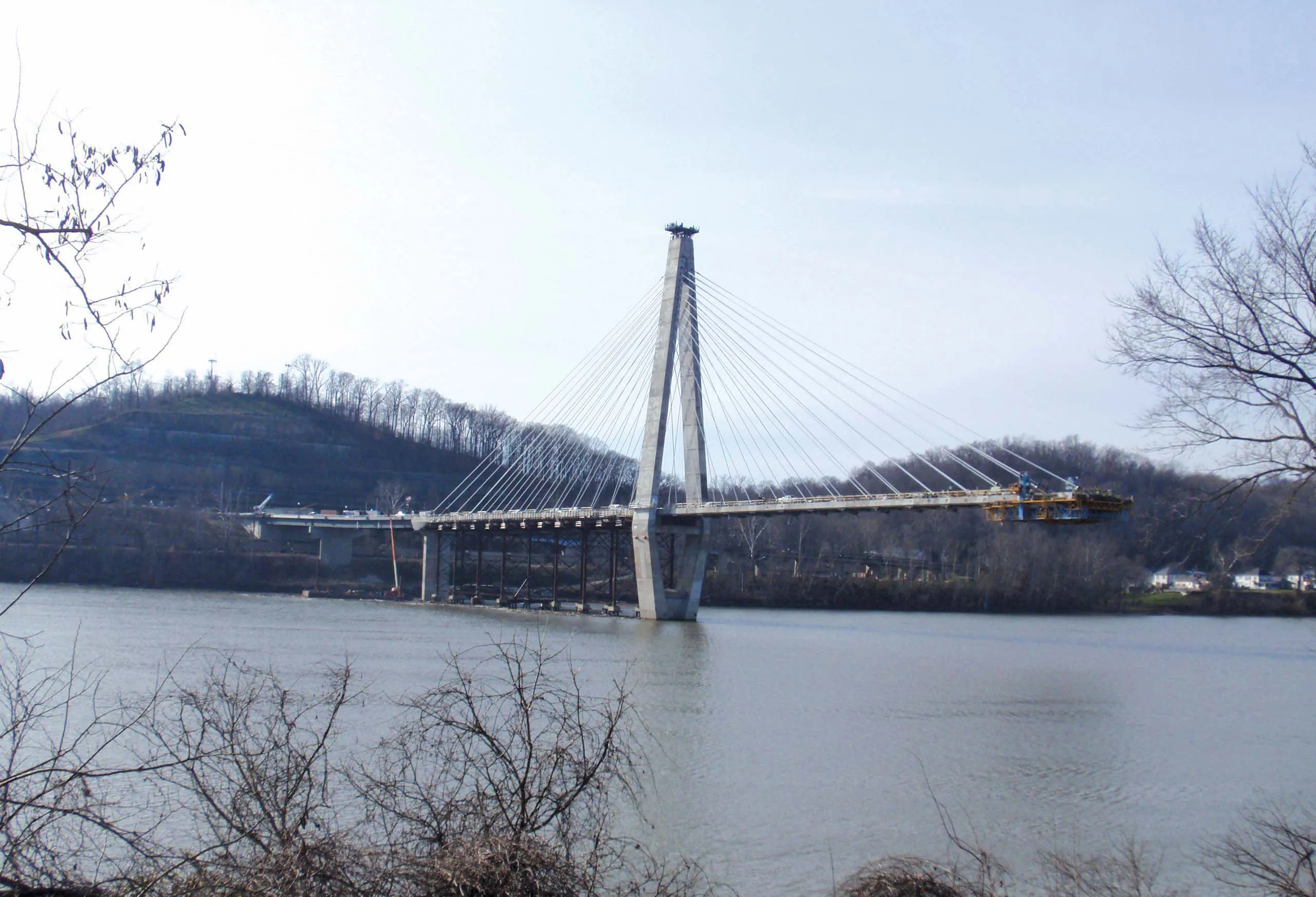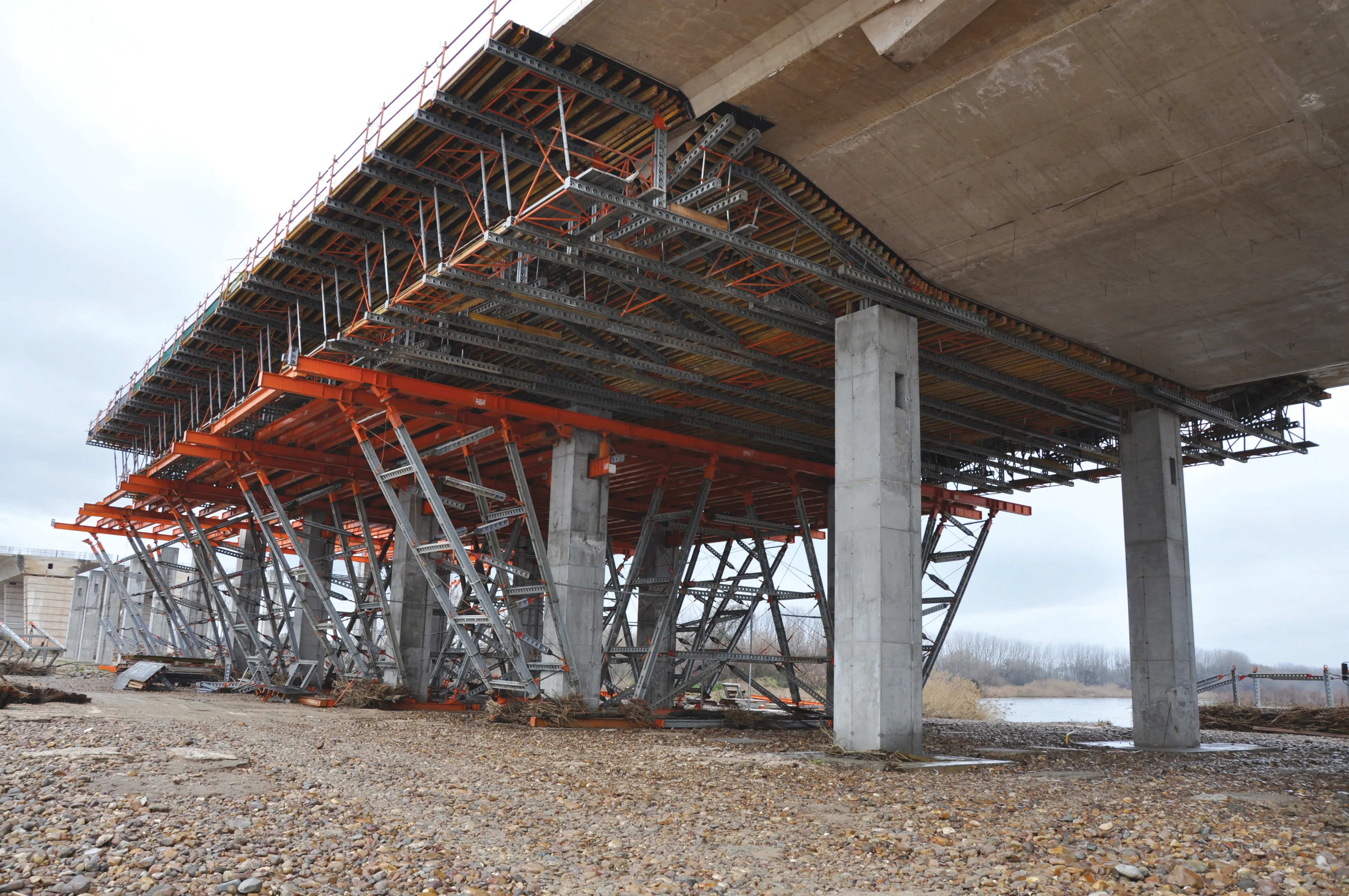
Work is underway on an innovative new bridge link over the Ohio River in the US. The 797.36m-long bridge includes a 274.3m cable-stayed main span, featuring two 112.8m cable-stayed side spans, two 96m-tall towers and two anchor piers on the river’s edge. The project team includes FINLEY, Brayman and VSL.
The team proposed design modifications and innovative use of materials and made a bid that was 4% below the final estimate of US$84.6 million. This was the only bid under budget and saved the
FINLEY provided pre-bid engineering services which included the development of a construction sequence that cast the back spans on falsework. This modification resulted in a savings of time, simplified construction and reduced the equipment required for the cable-stayed portion of the project by allowing land access to build the main span.
The falsework system along with precast concrete girders for floor beams on side spans, allowed Brayman to have land access to build the main span area. The falsework supported the construction required for the pylons and deck, eliminating the need for marine operations and provided a safer work environment.
The falsework was designed as a modular system, allowing it to be used for both the Kentucky and Ohio approaches and reduced the number of travellers from two to one. The modifications allowed the main span to be cast in place in a segmental, one-directional cantilever method.
FINLEY’s design modifications included a pioneering use in the US of precast stay anchor blocks. The use of these blocks allowed Brayman to install the cable stay and also simplified the traveller design, reducing the pouring cycle by a week.
Brayman opted to use precast concrete cofferdams rather than conventional sheet piling so as to speed up construction and save on costs. The use of precast cofferdams allowed a reduction in the volume of concrete required, as well as providing a sacrificial form for the tower footing.









